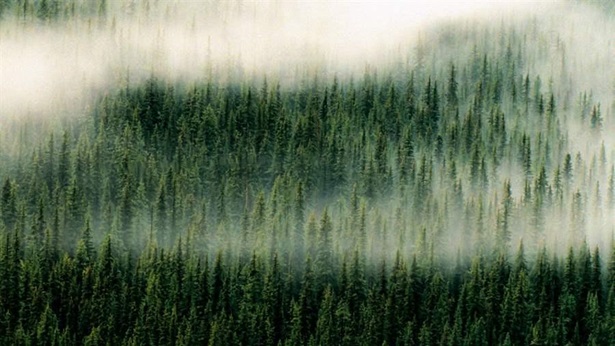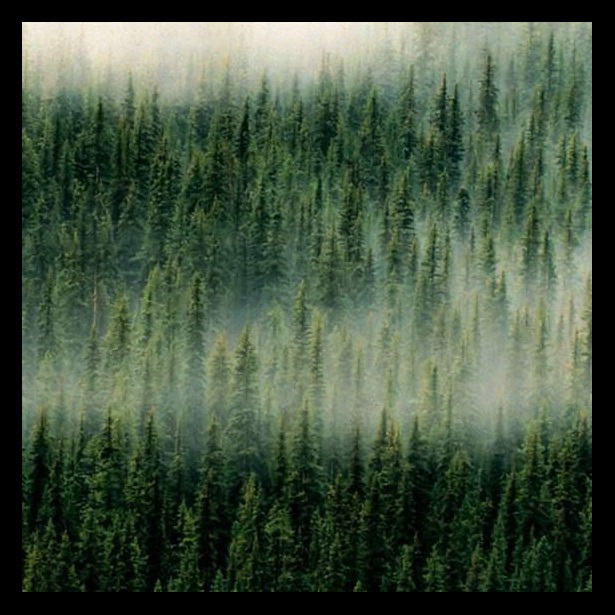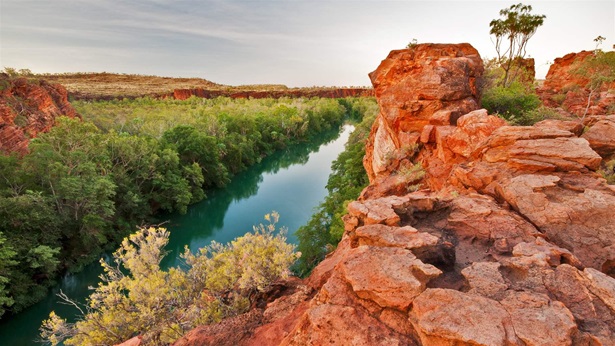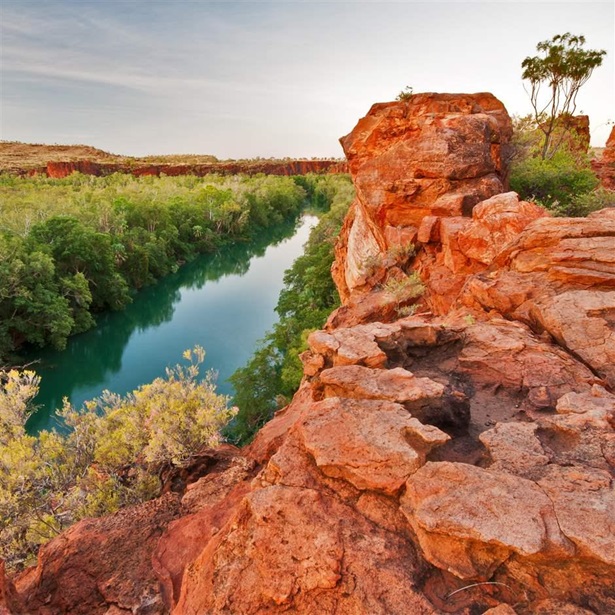Saving the Land
An independent evaluation found that Pew’s campaign to conserve wild lands in Canada and Australia was successful in sustaining global biological diversity.
Economic growth and technological advances have brought prosperity to many parts of the world, but the continued expansion of industrial civilization also threatens the survival of ecosystems that mark some of Earth’s most special natural places. In 1991, The Pew Charitable Trusts identified the loss of old-growth forests as a major threat to biological diversity and began work to conserve coastal temperate rain forests of the North Pacific Coast. Early success there encouraged the institution to extend its focus to Canada’s boreal forest in 1999 and, in 2006, to create the International Boreal Conservation Campaign. Having exceeded its 10-year goal of protecting 100 million acres by 2010, Pew raised the bar substantially in 2012 by setting a long-term goal of protecting 1 billion acres of boreal—half with formal protections and the other half through sustainable development rules—by 2022.
Encouraged by the progress in Canada in the mid-2000s, Pew turned its attention to Australia, another country with valuable wilderness, a strong conservation culture, and established political and legal structures.
In 2013, Pew’s planning and evaluation department began a review of the work in Canada and Australia to look at the progress since 2007. The aims were to determine the institution’s contributions to land protection in both countries, understand factors that affected these efforts, and identify lessons that could improve the chances of meeting Pew’s long-term goals. Four independent evaluators conducted 119 interviews, visited three sites in Canada and six in Australia, analyzed campaign documents, assessed public land protection records, and reviewed media coverage.
The evaluation’s findings were clear: Work in both countries was decisive or important in achieving a number of key outcomes.
In Canada, Pew’s project contributed to placing more than 150 million acres into protected status and in securing passage of two landmark provincial agreements that set targets to protect or sustainably develop another 400 million acres. With the addition of lands that could be protected through the campaign’s timber industry initiatives, the Canadian work affects about 700 million acres of land that is either currently protected, that governments have pledged to protect, or that may be subject to restrictions on commercial and industrial development.
In Australia, Pew’s efforts contributed to protecting about 75 million acres in the Outback, through a mix of conservation reserves, Indigenous Protected Areas, and land purchases. The evaluators also recognized the project’s role in obtaining over half a billion dollars to support Indigenous conservation programs in the Outback. In both countries, the evaluation attributed campaign successes to a combination of well-executed tactics, including leveraging science-based arguments for the value of land conservation, empowering Indigenous communities to assert their rights over native lands, and cultivating strong relationships with key decision-makers from across the political spectrum.
Canada
Since 1999, the International Boreal Conservation Campaign has been involved in placing 158 million acres of wilderness—spanning nine provinces and territories—into either interim or final protection. It is an outsize figure, about twice the area of all the lands that make up the U.S. National Park System.
The campaign’s direct support to First Nations was found to be important or decisive in the majority of these land protection accomplishments. In particular, the boreal campaign recognized the value of including these Indigenous groups in negotiations affecting their lands, especially because of their legal right to be consulted on development and resource extraction proposals. In the process, the campaign helped First Nations exercise the legal tools available to them and strengthen their voice at the table.
The campaign and its partner organizations also developed the Boreal Forest Conservation Framework, a game-changing document calling for 50 percent of the boreal to be placed in permanent protection with the remaining 50 percent subject to sustainable development. This was an unprecedented increase over the prevailing 12 percent standard for permanent protection in Canada. In 2007, 1,500 scientists from 50 countries signed on to the framework, adding valuable legitimacy.
The campaign used the 50/50 vision as a centerpiece for its public education efforts, aimed at informing key Canadian decision-makers. The Pew-funded Canadian Boreal Initiative provided leadership in formulating Ontario’s Far North Act of 2010, which set targets for strict protection and for sustainable development of 110 million acres—the first provincial-scale legislation to incorporate the campaign’s 50/50 concept. The following year, Quebec passed Plan Nord, an even larger provincial-scale conservation policy covering 293 million acres that also specified 50 percent strict protection and 50 percent sustainable development. Pew again played a central role in building consensus around important details of the plan and driving the political process forward. The evaluators noted that the Quebec premier “was reportedly impressed with the science-based policy narrative the campaign brought forward.”
At the same time, the evaluation suggested that in order to yield on-the-ground conservation outcomes from promising agreements like Plan Nord and the Far North Act, much work remains to develop explicit strategic plans and campaign capability at the provincial level. This effort should build on the campaign’s strengths—supporting First Nations to assert their rights and title through land protection, providing technical assistance with planning activities for affected communities, and building stakeholder buy-in through communications and government relations.
Australia
Since 2008, Pew’s efforts in Australia have led to protections for 27.6 million acres in the Outback—exceeding the campaign’s interim goals—through a mix of conservation reserves, Indigenous Protected Areas, and land purchases. The campaign also played an important role in the declarations of another 48 million acres of Indigenous Protected Areas, leading the evaluators to conclude that Pew initiatives have contributed to the designation of more than half of the total acreage protected since that government program began in 1998. In the process, Pew’s advocacy efforts mobilized support and bridged differences among conservationists, Aboriginal people, and ranchers and farmers.
Several core strategies and attributes underlie the campaign’s successful work on Indigenous Protected Areas. As in the boreal, chief among these was recognizing the value of partnering with Aboriginal owners. The campaign invested the time to understand the needs and aspirations of Indigenous communities and then used this knowledge to provide targeted funding, attract additional philanthropic support, establish corporate ties, moderate disputes, and offer other expert advice.
The project leadership in Australia also recognized that it is not enough to create a park or other protected area in the Outback. Because of overuse and natural degradation by fires, invasive weeds, and feral animals, protected lands require active management to maintain or restore their ecological value. As a result, Pew’s efforts in the nation’s capital, Canberra, have raised awareness of Indigenous conservation management, provided advocacy for key programs, and contributed to support for funding across party lines. This includes the campaign’s decisive role in establishing the ranger program, Working on Country Aboriginal, in 2007, and an important role in ensuring ongoing funding for it and related programs.
Going forward, the evaluation identified a need to revisit the “big picture” conservation framework for the Australian Outback and implications for measuring conservation success. The project has so far been applying the 50/50 concept developed for Canada—strict protections for one half the land and ecologically sustainable development standards for the rest—as a guiding vision for land protection in Australia. But it is not yet clear whether sufficient conservation science is available to support this framework as a robust foundation to drive the types of large-scale conservation gains that program leaders envision.
Pew’s international lands work has made a substantial contribution to protecting public lands in the Canadian boreal and the Australian Outback, helping to set a new standard for land conservation in Canada, yielding protections on a scale not seen before, with comparable efforts gaining traction in Australia. In both countries, success has been supported by a core set of approaches, which include grounding Pew’s advocacy efforts in peer-reviewed science, collaborating with Indigenous communities, retaining talented campaigners and government relations staff, and pursuing diverse strategic relationships and alliances. The program’s long-term protection goals—500 million acres in Australia and 1 billion acres in Canada—remain highly ambitious, requiring sufficient funding, talent, and time to ensure that the conservation strategies can reach their full potential.
Josh Joseph is an officer in Pew’s planning and evaluation department, where Richard Silver is a senior associate. Lester Baxter directs the department.



